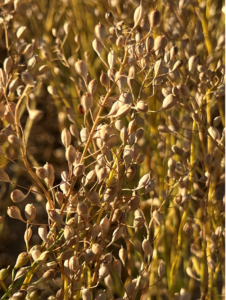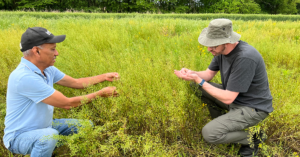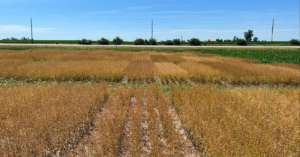Performance testing of Camelina as an alternative crop is building interest in North America. This carbon negative feed stock is used to generate biofuel and biodegradable bioplastic. Specifically new winter and spring Camelina varieties have shown a great potential for adaptability, performance and suitability for market acceptance in the warmer climates. This ancient oilseed crop is getting new time in the sun because of an increased focus on sustainable biofuels and the improved adaptability across the U.S.

The testing of these new varieties are showing performance in Georgia and Florida, as well as cold northern regions where winter snow cover protects the plants and provides water. Although the cereal crops are most popular in the Northern Plains, preliminary analysis of the Camelina performance data showed that Camelina can be an alternate crop for winter wheat in the Midwest and as a cover crop on the fallow land in many geographies and growing seasons where major crops yield poorly due to extreme weather conditions. Camelina growers can also benefit from the regional green gas reduction mandates for biofuel producers in California, Washington and Oregon.
A member of the Brassicaceae (or mustard) family, which includes mustard, canola, rapeseed, crambe, broccoli, and several other vegetable crops, Camelina has been grown in Northern Europe and Central Asia for at least 3,000 years. A popular crop through World War II, production decreased in the 1950s to make way for more rapeseed/canola production. It’s commonly known as gold-of-pleasure or false flax.

Current acreage projections show tens of thousands of acres in the next several years to fill demand for biodiesel, jet fuel and lubricants. According to Technavio, the camelina oil market is poised to grow by USD 166.45 million during 2021-2025, progressing at a CAGR of over 5% during the forecast period. The primary interest for Camelina in the U.S. is for production of biofuels, specifically biodiesel with the meal going to livestock feed.
Camelina is considered a better oilseed crop than others due to its short life cycle of 85-100 days and ability to grow well under stress conditions and in low fertility soils, while producing a high seed yield.

With high omega-3 fatty acid and antioxidants, it may also have potential as a food crop, which could be a welcome addition given the current cooking oil market. Cooking oil shortages due to decreased harvest, supply chain issues and the continued war in Ukraine could be impacting the U.S. oilseed acres. According to the U.S. Department of Agriculture, total U.S. oilseed production is up 6.1 million acres in 2022. Higher soybean production makes up majority of the increase, with canola and sunflower production also higher.
Forward-thinking agriculture experts with deep scientific experience are the core of AgriThority®. As an independent global science consultancy, we focus on exploring potential, expanding market access and evolving production for greater food security and sustainability. When your Research is ready for Development, turn to AgriThority for scientific business, market and product expertise. To explore other potential crops in regions across the world, reach out to AgriThority today.



